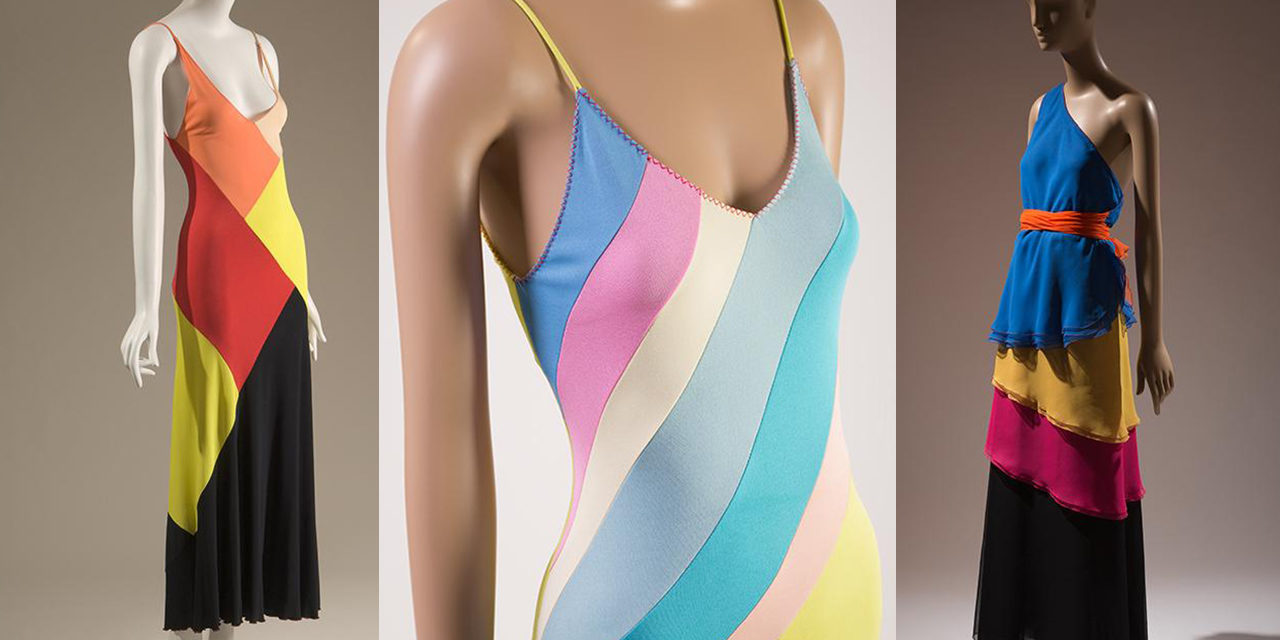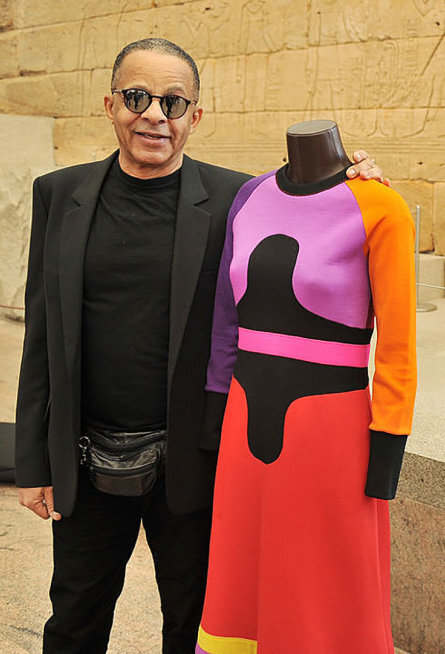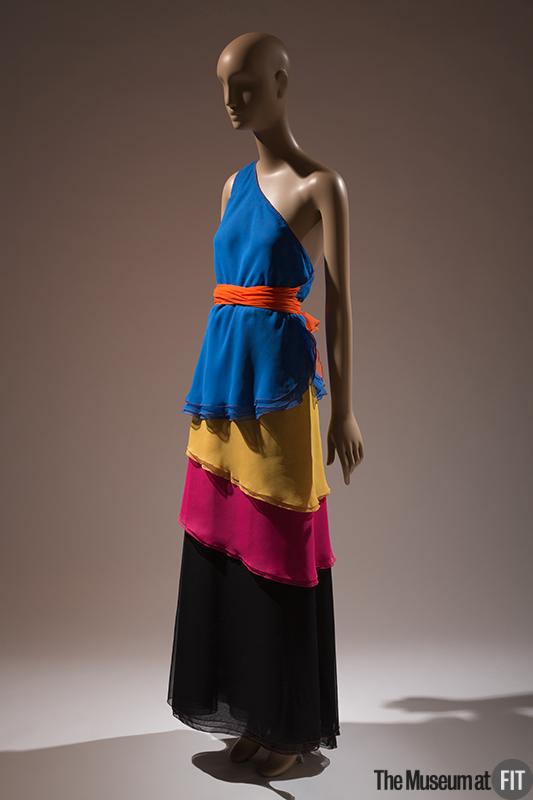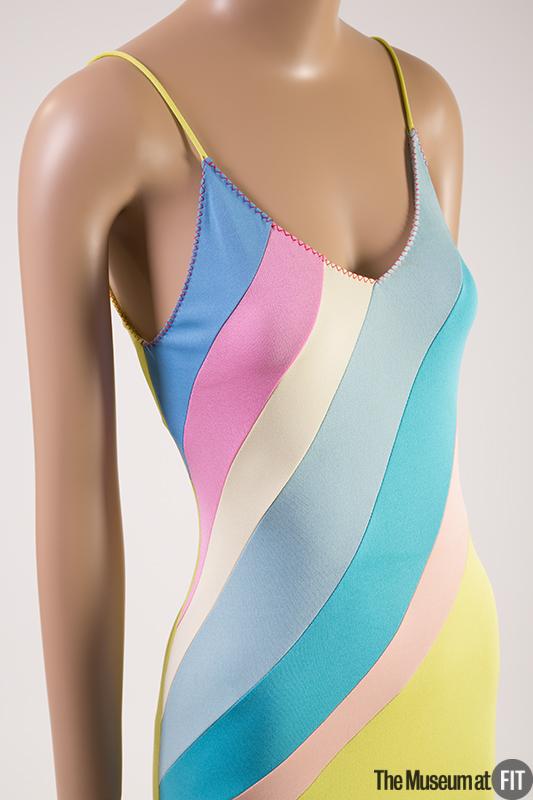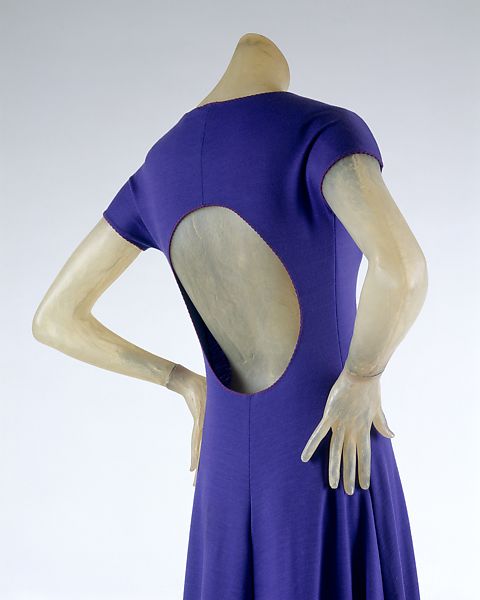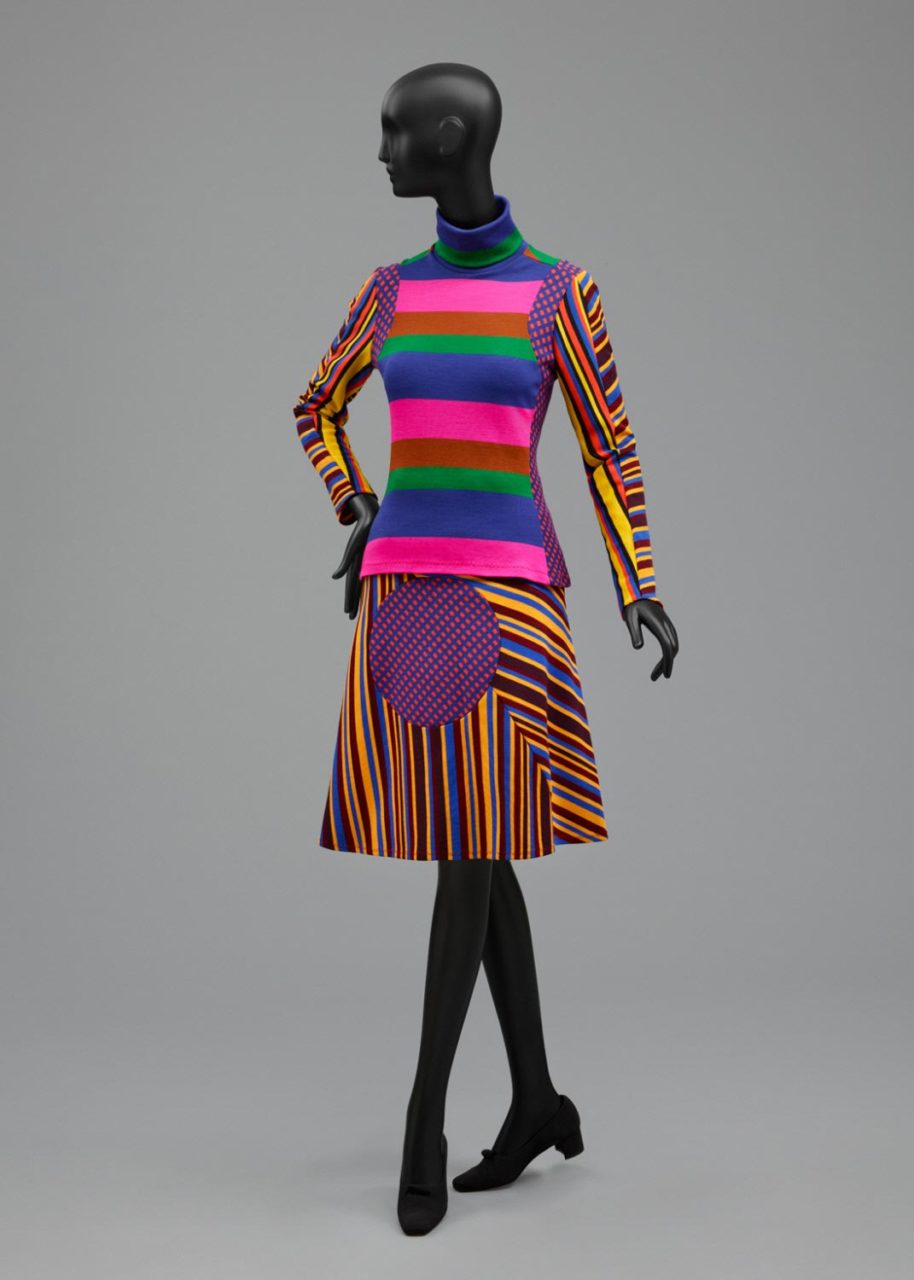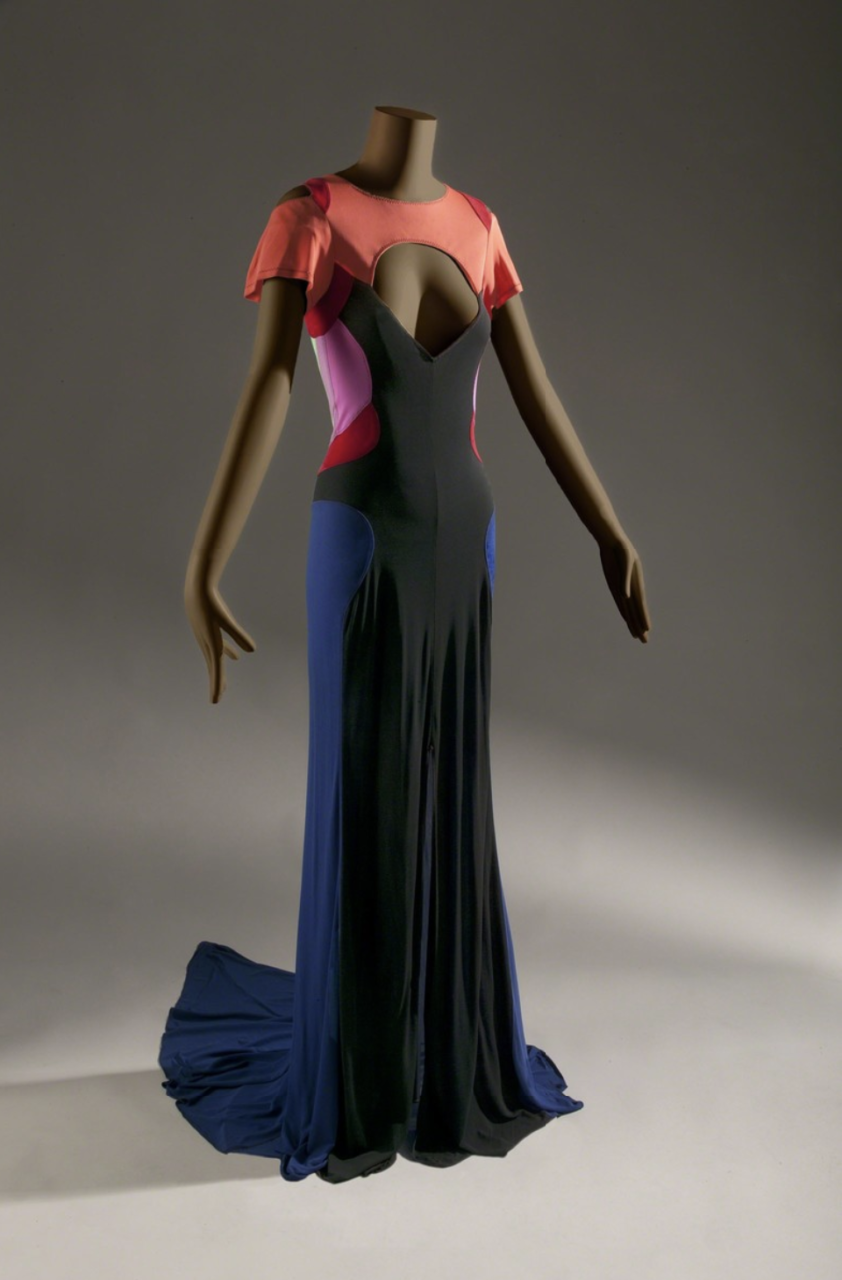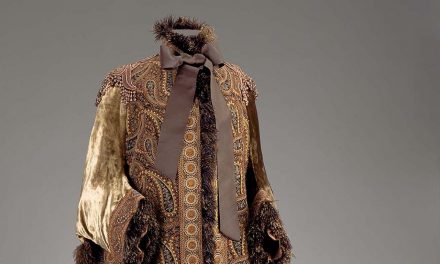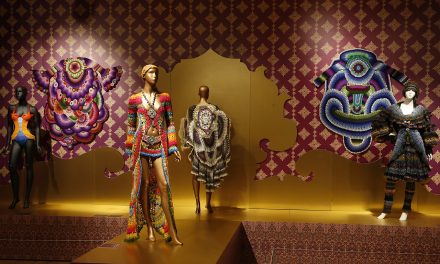About the Designer
Stephen Burrows is celebrated for his graphic color blocking and innovative use of matte jersey fabric at the height of the disco era. He became one of the first Black fashion designers to achieve international acclaim. Born in 1943 in Newark, New Jersey, both of Burrows’s grandparents were sample hands in the garment center. He graduated from the Fashion Institute of Technology with a fashion design degree in 1966.
Burrows was attracted to the stretch of knit fabric. He used a featherweight Jasco-brand jersey, typically used for lingerie, that required skilled sewing techniques. Hems were finished with zig zag edging, usually in red thread. Initially created by mistake, the “lettuce effect,” a curling hem caused by overstretching the jersey, became his signature (see an example in the Timeline essay below). His pieces were often soft and stretchy, and they were intended to be worn without any undergarments.
Dance and movement were at the forefront of Burrows’s design inspirations. While still in high school, he made Mambo dancing ensembles for his friends. In 1968, he opened “O” boutique, strategically located across the street from a popular nightclub. In 1970, Geraldine Stutz, president of department store Henri Bendel, offered the designer his own boutique within the store. Called “Stephen Burrows’ World,” it lasted from 1973 to 1976. His line proved to be extremely popular and profitable, capturing the spirit of the 1970s assertive woman. His slinky, unstructured pieces helped establish American fashion as independent from the influence of Parisian couture.
Photographer unknown. Me and my muse. Pat Cleveland, 1973. Source: Stephen Burrows
Photographer unknown. Stephen Burrows, 2019. Source: Custom Collaborative
In 1973, Burrows was one of the five American designers invited to participate in the “Battle of Versailles” fashion show, a spectacular competition between American and French designers.
Pat Cleveland, one of the first African American supermodels, was his greatest muse and modeled for him in the Versailles fashion show. The designer recalled, “She looked just like a sketch of mine that walked off the page.” Burrows was the youngest American designer to be included in the runway presentation, and he gained international recognition for his participation. The show also helped to position American design at the forefront of fashion.
Also in 1973, Burrows became the first Black designer to win a Coty award, and subsequently won the award again in 1974 and 1977. His contribution to American fashion was highlighted in a 2013 retrospective of his work at The Museum of the City of New York, entitled Stephen Burrows: When Fashion Danced.
Timeline Essays (Click the images to read more):
Stephen Burrows (American, 1943-present). Evening dress, 1973-1974. Polyester. New York: The Museum at FIT, 99.15.1. Gift of Mrs. Savanna Clark, 1999. Source: Museum at FIT
GALLERY
Stephen Burrows (American, 1943-present). Evening dress, ca. 1973. Rayon. New York: The Museum at FIT, 2016.32.3. Gift of Mary W. Delany, 2016. Source: MFIT
Stephen Burrows (American, 1943-present). Dress, early 1970s. Wool. New York: The Metropolitan Museum of Art, 1987.136.20. Muriel Kallis Newman, 1987. Source: The Met
Stephen Burrows (American, 1943-present) for Henri Bendel (New York, 1985-present). Woman’s Ensemble, 1971-1972. Wool knit. Pennsylvania: Philadelphia Museum of Art, 2003-117-1a,b. Gift of Nina Botel, 2003. Source: PMA
Stephen Burrows (American, 1943-present). Evening dress, 1973. Rayon jersey. New York: The Museum at FIT, 2000.97.1. Museum purchase, 2000. Source: MFIT
Photographer Alain DeJeune. Still from Stephen Burrows runway presentation at Versailles ’73, 1973. Source: National Post
Stephen Burrows (American, 1943-present). Evening dress, Spring/Summer 2007. Rayon jersey. Washington: Bellevue Arts Museum. Source: Artsy
To Learn more:
- Givhan, Robin. The Battle of Versailles: The Night American Fashion Stumbled into the Spotlight and Made History. New York: Flatiron Books, 2016. http://www.worldcat.org/oclc/908176012.
- Museum of the City of New York. Stephen Burrows: When Fashion Danced. New York: Rizzoli, 2013. http://www.worldcat.org/oclc/963868238.
- NJ.com, “Fashion Designer Stephen Burrows.” Video, Posted February 5, 2007, 1:18. https://www.youtube.com/watch?v=uys2IrQEZbI
- Target, “Design for All | Stephen Burrows.” Video, Posted September 10, 2019, 5:15. https://www.youtube.com/watch?v=Zqan0hfl_qA

